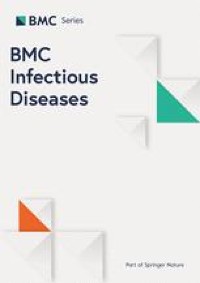Infection
High frequency of Enterococcus faecalis detected in urinary tract infections in male outpatients – a retrospective, multicenter analysis, Germany 2015 to 2020
E. faecalis is the second most frequently isolated bacteria in suspected UTI in men – in both mono- as well as polymicrobial infections. Men aged 18 to 29 years are predominantly at risk for detection of E. faecalis in suspected UTI. In contrast, E. faecalis plays a minor role in UTI in women [12]. Secondly, gram-positive bacteria have a frequency peak in women 80 years and older [13]. This emphasizes once more the importance to distinguish UTIs in men as an own entity. Further, for the implementation of empirical therapy recommendations studies considering men only are crucial.
Despite the important role of E. faecalis in monomicrobial infections in men it is involved as co-infecting pathogen in nearly 50% of all polymicrobial infections. Experimental studies demonstrated the ability of E. faecalis to modulate the pathogenicity of gram-negative uropathogens [14, 15]. Unfortunately, by having no data on clinical outcomes we could not investigate any possible associations between the severeness of infections and E. faecalis as co-infecting pathogen.
Despite the high frequency of E. faecalis in men, data showing the causative character of this pathogen are sparse. In female studies the clinical relevance remains questionable as studies could demonstrate that E. faecalis can frequently be isolated from midstream urine but rarely from paired specimens of catheter urine [16]. In men such studies are missing and the role of E. faecalis in UTI remains unclear. Nevertheless, recent studies could reflect our findings of significantly higher frequencies of E. faecalis in UTI in men compared to women [7]. However, it is important to mention that the detection of E. faecalis in midstream urine can be caused by other infections such as prostatitis.
Recurrency is significantly more frequent in suspected UTI when E. faecalis is isolated compared to E. coli. The current European guideline recommends trimethoprim–sulfamethoxazole (TMP-SMX) as first line antibiotic for UTI in men, fluoroquinolones such as ciprofloxacin are first line choice as well, if the local resistance is below 10% [17]. Nevertheless, the activity of TMP-SMX is, as stated by the EUCAST, uncertain against Enterococci and clinical outcome isn’t predictable by AST [11]. This could indicate the use of inappropriate empirical treatment with antibiotics being inactive against E. faecalis but active against E. coli. In line, higher recurrency rates in UTI caused by other pathogens than E. coli are reflected in other studies as well [18].
Nevertheless, the recurrency rates not only differed between species but within species. Recurrency rates in suspected UTI when E. faecalis is isolated differed statistically significantly and stepwise between age groups, with men aged 18 to 29 years having the lowest recurrence rates with 12%. As causal for this result we discuss two important points. Firstly, the susceptibility of E. faecalis against ciprofloxacin is statistically significantly higher in men 18 to 29 years compared to older men. Secondly, ciprofloxacin is more commonly used in younger individuals due to its side-effects, such as tendon rupture, being more pronounced in the elderly [19]. Taken together, the ciprofloxacin usage is more, and ciprofloxacin resistance is less frequent in men 18 – 29 years compared to older individuals. As the german and european guideline recommend ciprofloxacin as one of the empirical first-line agents [3, 17] guideline based empirical antibiotic treatment eventually has a higher likelihood of treatment success in younger men. Further, our findings favor age dependent empirical therapy recommendations. Age related differences in resistance rates regarding quinolone resistance in E. coli isolates are reflected in female outpatient only studies as well [20]. Importantly, we excluded all resistance rates from 2020 in our study due to the unpredictable influence of the current Covid-19 pandemic.
In total the ciprofloxacin resistance in Enterococci is not changing over time. This is especially important as the ambulatory fluoroquinolone prescription declined in Germany from 101 per 1000 in 2010 to 60 per 1000 insured individuals [21]. This could on the one hand indicate a pronounced delay in AMR-changes in response to changes of prescribing behavior and on the other hand the necessity to further decrease quinolone prescription in the ambulatory setting.
As the nitrate-test is a measure of nitrate reducing bacteria (i.e. enterobacteria), the high incidence of E. faecalis in male patients highly questions its use in male patients due to the missing capability of E. faecalis to reduce nitrates. This eventually would lead into false negative results [22]. This conclusion is reflected in studies with elderly female patients where the nitrate test had a low negative predictive accuracy among other things due to higher frequencies of gram positive bacteria in the elderly [23].
In contrast, these findings again support the German guideline recommendations to always perform urine-cultures prior to empirical antibiotic use in men [3].
This study has several limits. Among other things its retrospective design inherently gives risk for bias. Next, we did not have any clinical data such as comorbidities, outcome or severeness of symptoms. Due to the lack of clinical data, we cannot rule out asymptomatic bacteriuria as diagnosis. Therefore, the high frequency of E. faecalis could illustrate other things but infection such as contamination or commensal. Nevertheless, in male patients screening for UTI is not recommended by German guideline [3]. That being said, it is unlikely that urine specimens obtained from asymptomatic bacteriuria in male patients are send to laboratories.

